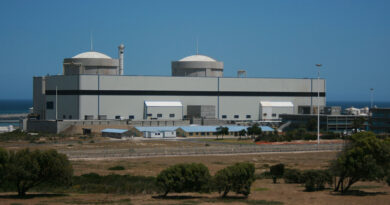Hydrogen economy to consume 2.4m oz of platinum annually by 2030
Recently, commodity analysts at Bank of America said that the hydrogen economy has seen significant growth in the last year, and is actually growing at 3.5 times the previously estimated pace. However, even with the accelerated growth rate, the sector still has a long way to go.
“Electrolysis capacity could now hit 205GW by 2030E,” the analysts said in the report. “While this is still far from the 560GW required to reach Net Zero by 2050 (IEA), recently announced projects mean that the gap has narrowed.”
Traditionally, hydrogen production is quite energy intensive and can have a fairly high carbon footprint as the gas is separated from hydrocarbons in the oil and gas sector. However, there is a growing push to create ‘Green Hydrogen’ projects that use electrolyzers to separate hydrogen and oxygen molecules in water.
Bank of America noted that there are four competing technologies in the Green Hydrogen sector, with nickel-containing alkaline water electrolysers (AELs) currently being the industry standard. However, they noted that platinum-intensive proton exchange membrane electrolysers (PEMs) have gained traction and currently account for 32% of installed electrolysis projects globally, and 74% of projects slated to be commissioned by 2030.
The analysts said this growth could represent significant new demand for platinum within the next decade.
“Under the assumption that PEMs will have a 70% market share by 2030 (i.e., slightly below of what is in the project pipeline), annual platinum demand from green hydrogen production could reach [778,000 ounces],” the analysts said. “In the Net Zero scenario, which would require accelerated investment in electrolysis, it could be three times bigger, at 2.4Moz, equivalent to about 29% of supply.”
The BofA analysts said that demand from the hydrogen sector could outpace the supply of platinum.
“We expect deficits in the platinum market to start kicking in later in the decade, potentially topping 1Moz in 2030,” they said. “Nevertheless, rising investments into the hydrogen economy and acceleration in the adoption of PEM electrolysers and FCEVs could tighten the market earlier than anticipated.”
In a comparison between AEL electrolysers and PEMs, the former are much cheaper to build; however, the performance and the durability of AEL systems can be less than PEM systems, the analysts said.
BofA also said that PEM systems can be smaller and can operate at lower temperatures, making them potentially more attractive than alkaline systems.
“[PEMs] can start up quickly and need less warm-up time. This reduces wear-and-tear, in turn boosting durability,” the analysts said.
However, the analysts noted that platinum-based electrolysers are significantly more expensive.
“The harsh oxidative environment typical of PEM electrolysers requires materials that can withstand these conditions. The use of titanium-based materials, precious metal catalysts (typically platinum, iridium and ruthenium) and protective coatings enables PEM electrolysers to achieve long-term stability in cell components, optimal electron conductivity and cell efficiency. However, these benefits come at the expense of higher manufacturing costs,” the analysts said.
Although platinum is competing with nickel for market share in the hydrogen economy, BofA said that there is one sector where the precious metal stands alone: hydrogen fuel cells.
“Producing hydrogen is one thing, using it another. The constructive demand outlook for platinum also stems from a growing fuel-cell vehicle (FCEV) industry,” the analysts said.
They noted that platinum-intensive fuel cells are the only commercial option within the transportation sector and few alternatives are on the horizon.
The analysts said platinum fuel cells are optimal for the auto sector because they are relatively small and can operate at relatively low temperatures.
However, the analysts said that adoption remains the biggest hurdle for fuel cell vehicles. It is expected that electric vehicles could represent about 49% of market share in the auto sector by 2030, but FCEV is projected to only represent 0.2% of sales.
“In absolute numbers, global annual output of BEVs could rise to 41 million units in 2030, compared with less than 160,000 units (from 16,000 in 2022) for FCEVs,” they said. “Even in the IEA Net Zero scenario, FCEV penetration rates are set to reach only 3% for light-duty vehicles sales in 2030 and 5% for heavy trucks.”
At the same time, the analysts noted that even a relatively small market can still impact platinum supply.
“We estimate that platinum demand from FCEVs, including both passenger and commercial vehicles, could rise at 27% CAGR out to 2030, to about 140koz,” BofA said. “Under the IEA Net Zero scenario with increased penetration rates that could reach 2.6Moz, implying a 92% CAGR.”



